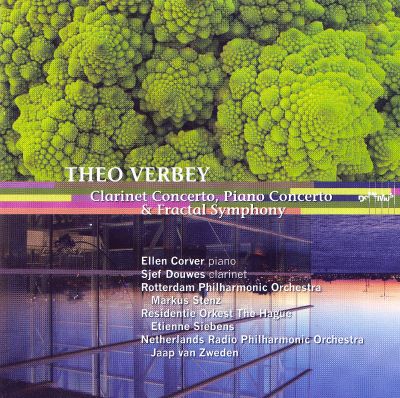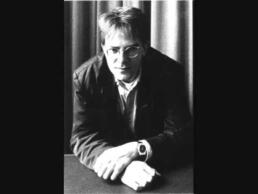Details
Duration:
20'
Instrumentation:
5555 8532 2timp 4perc pf-solo
Dedicated to:
Ellen Corver
Premiered by:
The Netherlands Radio Philharmonic Orchestra, conducted by Jaap van Zweden
Find on CD:
About 'Piano Concerto'
“If we assume that it is possible to distinguish in music between beauty of sound and beauty of emotion / affect, then the above sequence is exactly the one I am aiming for. Beauty of structure comes first, because music is in some ways exclusively a sounding structure.”
This statement, made by Theo Verbey, is reminiscent of Stravinsky’s assertion that “art is only about art.” The Dutchman Verbey also seems to regard emotion as a kind of by-product of form, as something inherent to the musical structure and not as an end in itself. Verbey, who teaches instrumentation and composition at the Conservatories of Amsterdam and The Hague, is known for his thorough knowledge of music history and his artisanal approach to musical material. Verbey: “Musical thinking is a non-verbal activity. You start with a few melodic, harmonic ideas and a rough idea of how a piece should sound. The challenge is then in devising a structure, imposing limitations on the material, as it were, and from there looking for solutions, from the large to the small.” With regard to “the small,” or the musical structure, Verbey was influenced by the discoveries of fractal geometry—a mathematical system with which organic shapes can be calculated and reduced to their smallest units. In this way, underlying numerical ratios determine the layout, the proportions and also the rhythmic-harmonic processes of the composition. Verbey has this to say about his “fractal technique”: “I think it is nice to bring such an abstract division of time into alignment with musical ideas, in the field of harmony and development as well. In some ways, this technique is related to the tone rows of the serialist composers. I make a rhythmic plan, even though that plan or “sequence” does not consist of twelve but perhaps four or five elements. I primarily use that plan to time the chord changes.” Such mathematical structures, however, form a hidden layer within the composition that is hardly perceptible to the listener. Beyond that, Verbey writes a very recognizable type of music that is rooted in the experiences of many centuries of music history. His compositions are characterized by allusions to historical models, a unique sense of dramatic tension and musical structure, and the use of tonal-modal chordal connections.
Verbey’s Piano Concerto, commissioned by the ZaterdagMatinee, is an exceptional addition to the genre because of its unusual orchestration. As the composer explains: “The ensemble consists exclusively of wind and percussion. The wind instruments used are the same as those used by Stravinsky in Sacre. These orchestral forces were available because such a large wind group was needed for this concert. What I didn’t want is what you have in a traditional piano concerto, where a symphony orchestra surrounds the soloist. An alternative would have been to use a reduced orchestra, but I chose not to do that this time.” Formally, the work consists of two slow “dialogues” alternating with two fast “toccata” movements. Verbey: “The dialogues are what they are, namely an alternation between fragments in the piano with fragments in the ensemble. As far as the toccata movements are concerned, I focused on the historical form which is characterized by a hammering motion. In some places I deliberately referred to famous toccatas from music history, such as those from Ravel’s Le Tombeau de Couperin, Debussy’s Pour le Piano and Prokofiev’s op. 11—although not literally. It’s more about the idea. (In modernism, those sorts of musical forms are no longer referred to in the same way.) The second toccata refers to Berio’s Points on the Curve to find for piano and 23 instruments—that also has a similar type of motion, a very fast 32nd-note movement, but there, it is no longer called a toccata. The piano is an instrument in which the tones resound relatively fast, and that gives it a completely different characteristic of sound than almost all the other orchestral instruments.”
The Piano Concerto is dedicated to the pianist Ellen Corver, with whom the composer shared ideas extensively during the preparation phase: “Ellen had a whole list of things she wanted in the concerto, such as silences, dialogues, horizontal woodwind chords and a coda. She wanted a kind of mirror effect in the material, so that elements played by the pianist plays also return in the orchestra. Composing means carrying out an intention, and suggestions from the performer can make a contribution to that. They result in melodic ideas that you can then use in developing of the musical form. They are ultimately a tool to help realize a piece of music. ”

